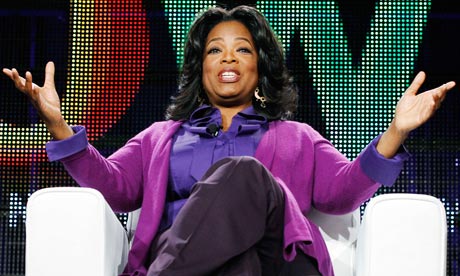By C P Surendran in The Times of India
A most comical anti-corruption opera is being staged all over the country under the leadership of Anna Hazare, who in his moral tyranny is actually beginning to look like Mahatma Gandhi. This itself is a bit of laugh: when a man wants to be someone else eventually transmigration of the soul and nose happens. It only remains for Anna to hold the Dandi March.
But the real reason why this anti-corruption campaign is looking like an over-stretched Johnny Lever joke is that the people largely constituting the movement have happily externalized corruption as if it's an event happening outside themselves.
The fact is that the petite bourgeoisie-auto rickshaw drivers, and constables, if Haryana Police Sangathan support for Jan Lok Pal's bill is any indication, and low paid government officials and assorted elements-have no idea that they are very much part of the corruption. They believe it is a disease outside them, primarily endemic to the government and its institutions, when they are active players in the drama.
The others who are a part of the movement, including the youngsters, who this lookist country swears by, are there for an opportunity to hold candles and chant Sarojini Naidu kind of poems which normally begin: O, deliverer… The youth will hold a candle and even burn a finger from the dripping wax, but when it comes to admission, if an IIT director or an engineering college dean will accept cash for seats, they will gladly part with it.
For one with passing interest in the Lokpal politics, the only major difference in the bills drafted by the government and Anna apart from bringing the PM into the bill's ambit, seems to be that the government wants to set up a separate investigative agency while Anna and his team want an existing investigating agency like the CBI to report to the Lokpal committee. That would eventually mean the Lokpal evolving into a parallel power vortex, and might make Parliament redundant.
In other words, those whom you elected will not be of as much consequence as those self-appointed or government nominated Lokpal committee members. That is a fraught process, and actually might create more unaccountability and corruption.
That is one part of the joke. The other, equally entertaining part has been the Congress-led UPA government's complete and visible bankruptcy of ideas to tackle an agitation outside party structures. Much the same happened before the Emergency when Jayaparakash Naryan led a movement that cut across party lines against the Indira Gandhi led Congress government, which panicked and declared an Emergency.
Anna's movement is mostly apolitical. And the support it has drawn, for all its faults, is an indication how political parties and other democratic institutions have failed to represent people, or inspire faith. Across the world, memberships of political parties are decreasing. Alternate people's groupings with environmental and ethical themes are gaining strength. In Europe and America where democracies are institutionally stronger and fairer than in India, this could be explained as an evolution.
But, in India where fairness woven into the system is at best fraying, when a movement is directed primarily against its institutions and the political party in power as well as the ones in Opposition are fumbling in their response, a movement like this can have dire consequences. Clearly, the parties have failed to represent the people, which is why a moral tyrant like Anna is holding the government to ransom. When institutions fail, individuals take up their role. .And if Anna wins, the nature of Indian politics will change.
It'd be fun to see who were the advisors who landed a wimp like Prime Minister Manmohan Singh into the Lok Pal soup. A party that can't argue its case against a retired army truck driver whose only strength really is a kind of stolid integrity and a talent for skipping meals doesn't deserve to be in power. Power goes to people who love it. Anna Hazare loves nothing more than power.
By Richard Garner, Education Editor and Laurie Martin
Wednesday, 17 August 2011
Wednesday, 17 August 2011
A year is a long time in the world of higher education. A university that has been the most expensive in the country will become one of the best in terms of value for money next year.
The University of Buckingham is ranked third in a table of student satisfaction published today – but those above it will be charging the maximum £9,000 a year for a three-year course.
Professor Terence Keeley, the vice-chancellor, said "We're going from the most expensive university in the UK to the cheapest," he said yesterday, "and we still don't know how to handle that psychologically."
Buckingham, the UK's only private university, scores 93 per cent in a table showing the percentage of students sat each university satisfied with their courses – putting it in third place.
Top of the league table is the higher charging Brighton and Sussex Medical School followed by Cambridge University.
The table, however, would appear to show that if students are looking for value for money next year, they need to look outside of the traditional state-funded university you can go away to and study at for three years.
All those in the top ten that can charge £9,000 a year for their courses and those in England are doing so.
Buckingham University, who will be charging £7,500 a year for a three-year course, and the Open University, which is charging £5,000 a year, are the exceptions.
In Buckingham's case, courses are spread over a two-year period – so the actual cost is £11,250. However, that is still significantly less than the £27,000 for a three-year course at a university charging the maximum.
Professor Keeley is clear as to why students rate the university.
"That's straightforward," he said. "In every other university in Britain, the client is the Government – so they have to work to government targets. Here the client is the student."
Christina Lloyd, director of teaching and learning at the Open University – which has been in the top three for the past seven years, added: "As students become more focused on their finances, quality, value for money and the student experience are more important than ever."
Overall, 83 per cent of students who responded to this year's national student survey said they were satisfied with their courses, nine per cent were dissatisfied and eight per cent said they did not know.
Individual figures ranged from 95 per cent for Brighton and Sussex Medical school to just 67 per cent for Ravensbourne College, a university sector college specialising in digital media and design.
In the further education sector, the figures were more varied with 100 per cent satisfaction registered at Trafford College in Greater Manchester but only 39 per cent in Barnfield College.in Luton and Bedford.
Whilst universities were pleased that the overall satisfaction figures were a slight increase on last year, there was a warning of the impact cuts and rises in fees could have.
The University of Buckingham is ranked third in a table of student satisfaction published today – but those above it will be charging the maximum £9,000 a year for a three-year course.
Professor Terence Keeley, the vice-chancellor, said "We're going from the most expensive university in the UK to the cheapest," he said yesterday, "and we still don't know how to handle that psychologically."
Buckingham, the UK's only private university, scores 93 per cent in a table showing the percentage of students sat each university satisfied with their courses – putting it in third place.
Top of the league table is the higher charging Brighton and Sussex Medical School followed by Cambridge University.
The table, however, would appear to show that if students are looking for value for money next year, they need to look outside of the traditional state-funded university you can go away to and study at for three years.
All those in the top ten that can charge £9,000 a year for their courses and those in England are doing so.
Buckingham University, who will be charging £7,500 a year for a three-year course, and the Open University, which is charging £5,000 a year, are the exceptions.
In Buckingham's case, courses are spread over a two-year period – so the actual cost is £11,250. However, that is still significantly less than the £27,000 for a three-year course at a university charging the maximum.
Professor Keeley is clear as to why students rate the university.
"That's straightforward," he said. "In every other university in Britain, the client is the Government – so they have to work to government targets. Here the client is the student."
Christina Lloyd, director of teaching and learning at the Open University – which has been in the top three for the past seven years, added: "As students become more focused on their finances, quality, value for money and the student experience are more important than ever."
Overall, 83 per cent of students who responded to this year's national student survey said they were satisfied with their courses, nine per cent were dissatisfied and eight per cent said they did not know.
Individual figures ranged from 95 per cent for Brighton and Sussex Medical school to just 67 per cent for Ravensbourne College, a university sector college specialising in digital media and design.
In the further education sector, the figures were more varied with 100 per cent satisfaction registered at Trafford College in Greater Manchester but only 39 per cent in Barnfield College.in Luton and Bedford.
Whilst universities were pleased that the overall satisfaction figures were a slight increase on last year, there was a warning of the impact cuts and rises in fees could have.




